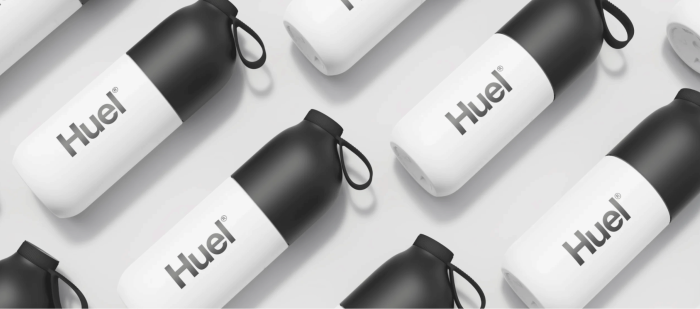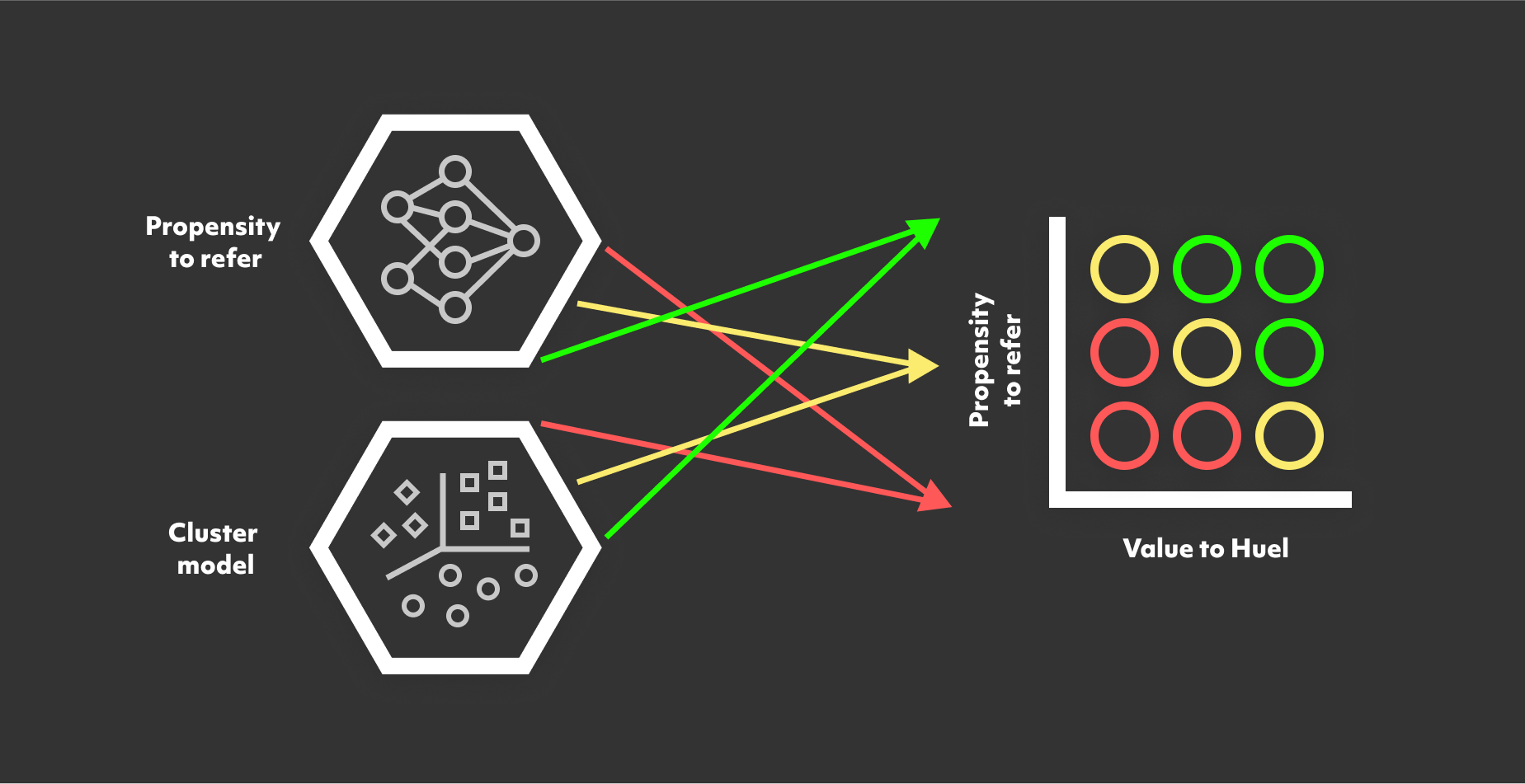
Ramping up Huel referrals
Project summary
With 92% of consumers trusting recommendations from friends and family over brand messaging, referrals had played a key role in Huel’s early growth, offering an efficient alternative to costly brand or performance marketing. However, over time, referral activity declined by more than half, forcing increased reliance on paid marketing and raising customer acquisition costs.
To counter this trend, Huel tasked Armadillo with reestablishing referrals as a core driver of growth, aiming to reignite organic advocacy and restore balance in their acquisition strategy.

Campaign in Detail
Challenge
Referrals can be a highly powerful acquisition tool. People trust people more than they trust brands. According to Nielsen, 92% of consumers trust recommendations from friends and family over any other type of advertising.
If a brand can harness that power, they can see significant gains in acquisition while dramatically reducing the expenditure of large brand-building or performance marketing campaigns.
Huel knew this more than most. For a young brand that was seeking to shake up the way people think about nutrition completely (without massive marketing budgets), what better way to convince someone to try its products than have someone trusted make a recommendation?
And it worked. For a while Huel saw powerful growth through the channel. However, over the last few years the proportion of its customers making referrals had dropped by over half. This in turn lead to growing expenditure in other forms of marketing increasing the cost of acquisition.
It was against this backdrop they set Armadillo the challenge of once again returning referrals to a more prominent place in their acquisition mix.

Approach
For tricky challenges like this, we don’t just look at the numbers or throw out a creative idea and hope it sticks. We take a three-lens approach to really get to the heart of what’s going on – and what to do about it.
– First, we dig into the data to uncover what people are actually doing.
– Then, we use consumer psychology to unpack why they’re doing it.
– Finally, we layer in a deep understanding of our client’s world, their business model, their commercial pressures, and what’s possible to deliver.
It’s only when you look through all three lenses together that you see the full picture and spot solutions that will really move the needle.
- Starting with the data
If Armadillo is all about supercharging a brand’s CRM strategy, then data is the raw fuel that powers it. Our Data Science team’s job was to take Huel’s referral data and turn it into something truly valuable.
After checking the data for quality and completeness, we built a predictive model to work out which customer behaviours were most likely to lead to a referral. From there, every single customer got a “referral likelihood” score; essentially, their odds of telling a friend about Huel.
We then used clustering to group customers not just by referral potential, but also by how valuable they were to Huel’s business. That gave us a golden segment: the VIPeRs Very Important Potential Referrers. These were the people who loved Huel enough to recommend it and had real commercial value.
By combining predictive modelling with smart segmentation, we created a playbook for personalised, high-impact engagement. Better still, we made sure Huel could keep the models updated themselves, so they could always focus on the right customers.
- Understanding the ‘why’
Data can tell you what’s happening, but not always why. That’s where behavioural insight comes in.
For a referrer, the big questions were:
- Will this make me look good? (social capital)
- What if they say no? (fear of rejection)
For the person being referred, trust in the referrer was the deciding factor, and that trust often came down to how genuinely enthusiastic the referrer was about Huel.
If we didn’t tackle these human motivations and barriers, even the VIPeRs would be less likely to act.
- Making it practical
Finally, we needed to ensure every recommendation worked in Huel’s real-world setup, their tech, their budget, their commercial goals.
We asked:
- How do we make referring easier for both VIPeRs and their friends?
- What’s the right reward that feels worth it but still makes business sense? Money? Product? Merch?
- How generous should that reward be to spark action?
One study in the Journal of Marketing found that when referral programs rewarded both sides, referral rates jumped by 58%. So getting this part right wasn’t just nice to have, it was essential.
Outcome
The output of this behavioural triangulation was a collection of ideas that would deliver significant, incremental impact on referral levels, including:
1. A methodical test program that would find the incentive that delivered the most effective and efficient results from our VIPeRs
2. Exclusive benefits for VIPeRs including early access to new and/or free products
3.Developing a strong visual identity for the referrals program to elevate its presence across communications – supported by a content strategy that showcases the unique perks and VIPeRs would enjoy.
Those ideas were forecast to deliver an increase of 71% in referrals across both the UK and US markets.

